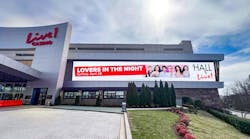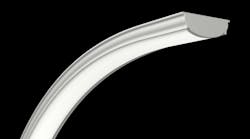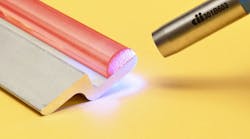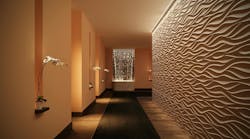Date Announced: 22 Nov 2007 -- Technology report describes LED manufacturing techologiesLED component volumes have been driven mainly by mobile phone sales recently, showing an incredible annual compound growth rate of more than +45% per year. Due to the strong pressure on component prices, revenue growth has been moderate: only +8% over the last 2 years. “It is now clear that LED market needs to expand into new and profitable sectors with higher margins. We believe that this growth will come from 3 additional application areas: automotive lighting, architectural lighting and general illumination, in addition to the LCD backlighting market.” says Philippe Roussel senior analyst at Yole Développement, in charge of Compound Semiconductor activity.To capture the profits in these application sectors, significant improvements are needed in LED performance, especially in $/lumen and in Lumens/Watt at full power. New approaches manufacturing technologies are required at all levels: materials, design, front-end, back-end and packaging, in order to profit from the potential of Ultra-High Brightness LED: UHB-LEDs (see Chart).Chart shows LED market size as a function of LED type, based on packaged LEDs.More power and efficiency leads to higher margins and profitsEPIC Secretary General Tom Pearsall points-out: “Recent announcements from LED manufacturers show very impressive results on the lm/W efficiency parameter. (150 lm/W has been proved in laboratory), but only at low-current (<20mA) low-power operation.The difficulty in obtaining both high power and high efficiency simultaneously un-derscores the immediate need for dramatic improvements in manufacturing tech-nologies. Today, no more than 70 lm/W has been demonstrated with high-power LEDs (> 1 Watt). In other words, LEDs still lag behind the performance of fluores-cent lamps for general lighting applications.Today high power LED are generating on the average 75% heat versus only 25% light. Several parameters have to be dramatically improved like:- Internal Quantum Efficiency- Electrical losses- Extraction efficiency- Phosphor conversion and optics qualityThis report describes 10 key manufacturing technologies, in use or under investiga-tion that considerably improved the LED optical output power among:- New substrate materials- Laser Lift-Off- Temporary Bonding- Transparent top contacts- Binning- Surface Texturing- Phosphor composition and depositionA new business model is needed to market LEDs for general illuminationLEDs have a natural advantage in automotive outdoor and backlighting, but a new business model is needed to penetrate the general lighting sector where fluorescent light remains a strong competitor.Today the incandescent lighting business generates revenues because 30% of the installed base is replaced every year and the manufacturing infrastructure has been amortized for many years. Industry needs to solve the challenge of building a growing market of lighting products with a quasi-infinite lifetime while developing mass production methods for the next-generation of UHB-LED.
Contact
About this report: Philippe Roussel, Tel: +33 (0)472 83 01 86 YOLE DEVELOPPEMENT, 45 rue Sainte Geneviève, F - 69006 Lyon – France
E-mail:[email protected]
Web Site:www.yole.fr






